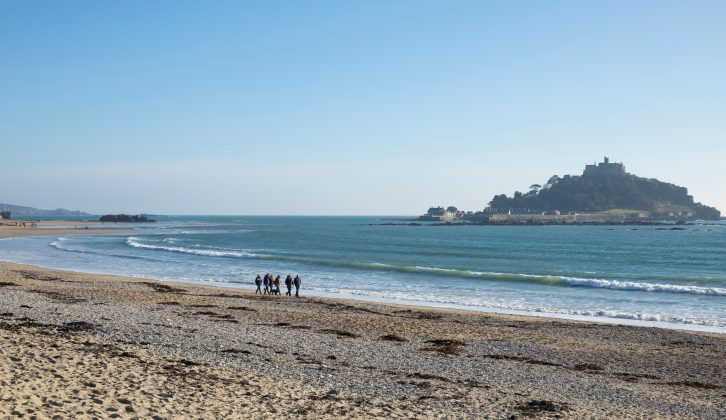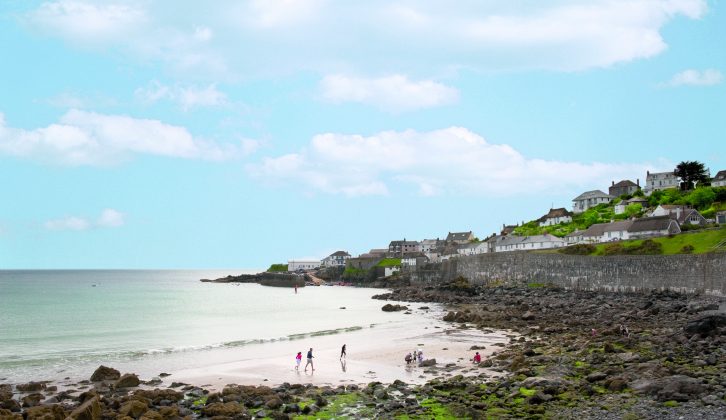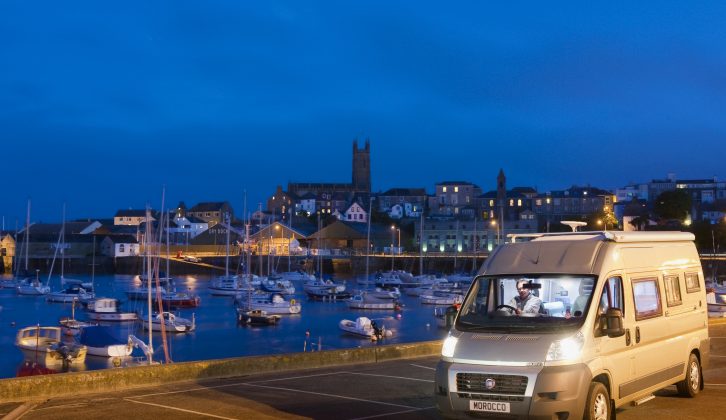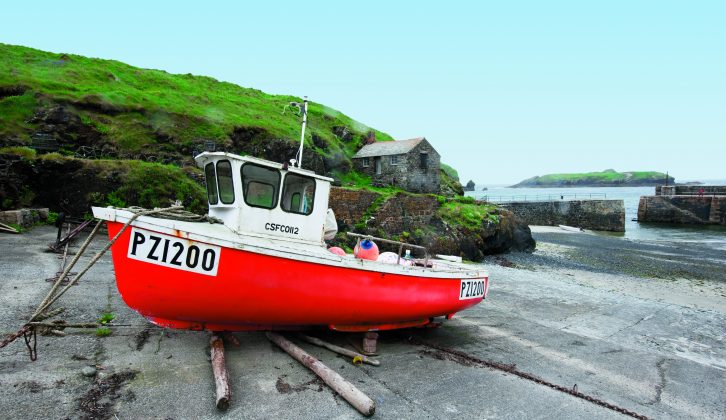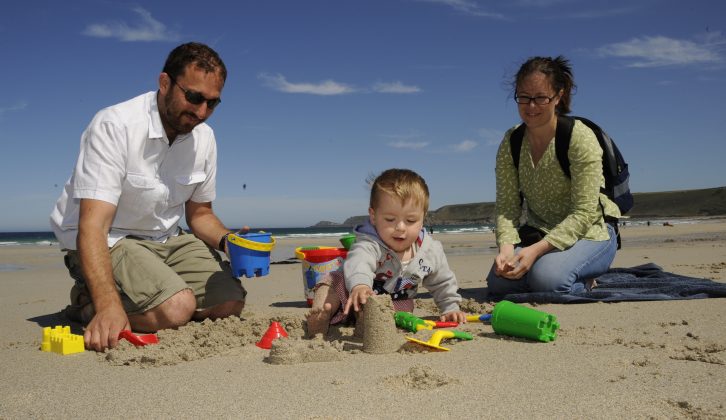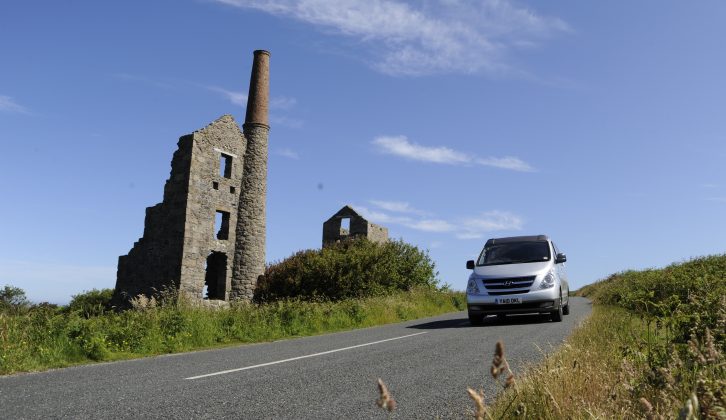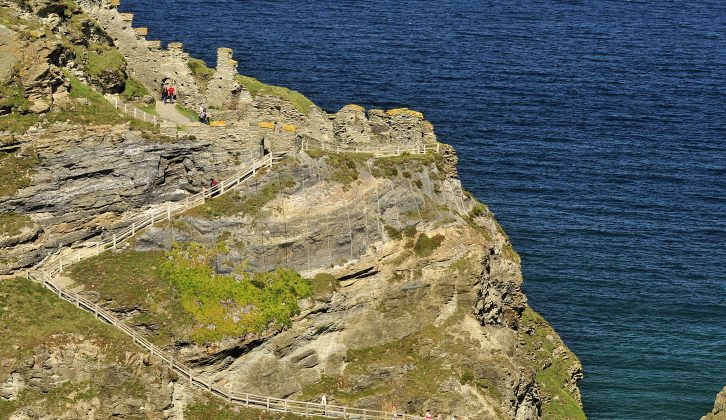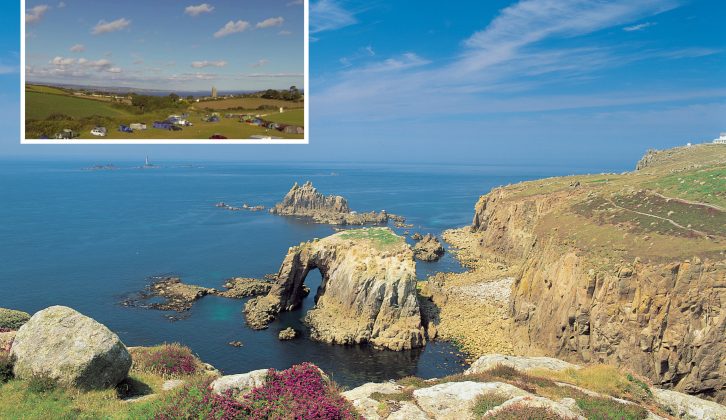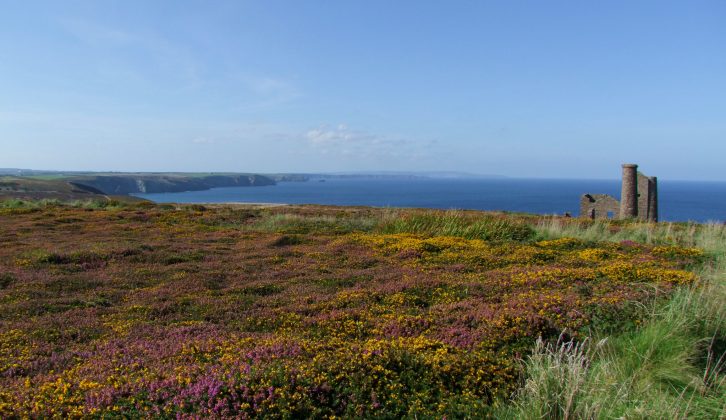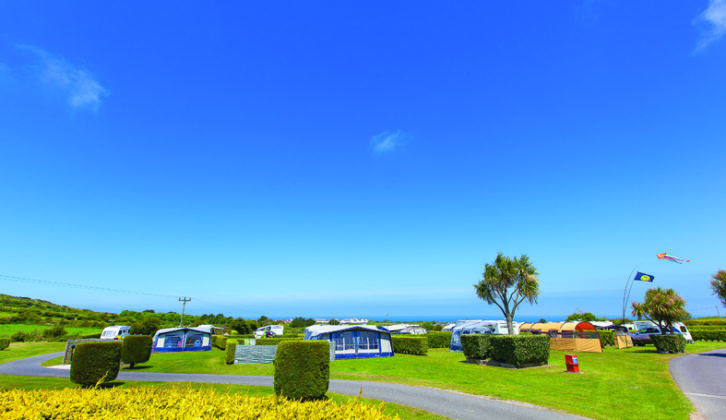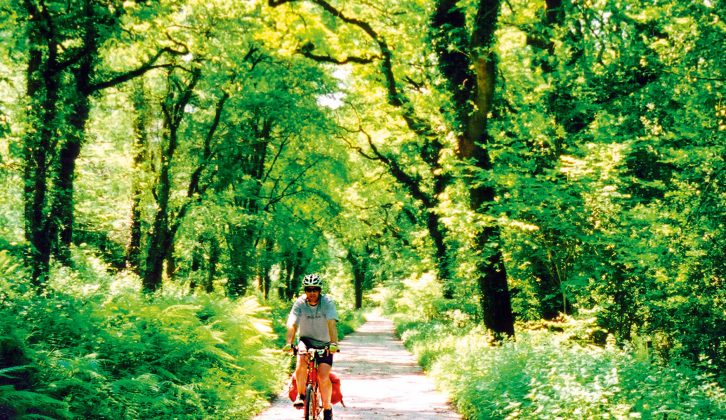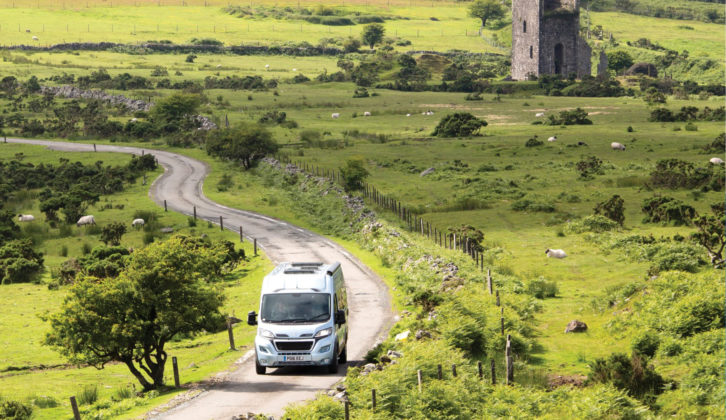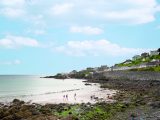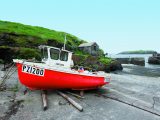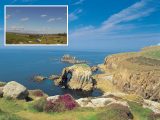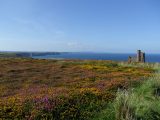You’d be forgiven for thinking that England’s most southwestern county is all about the seaside. Understandable. With 295 miles of coastline – the longest stretch of any county in the UK – 80% of the county is surrounded by sea. It is, after all, a significant draw for motorhome holidays in Cornwall and the enjoyment of a traditional bucket and spade vacation.
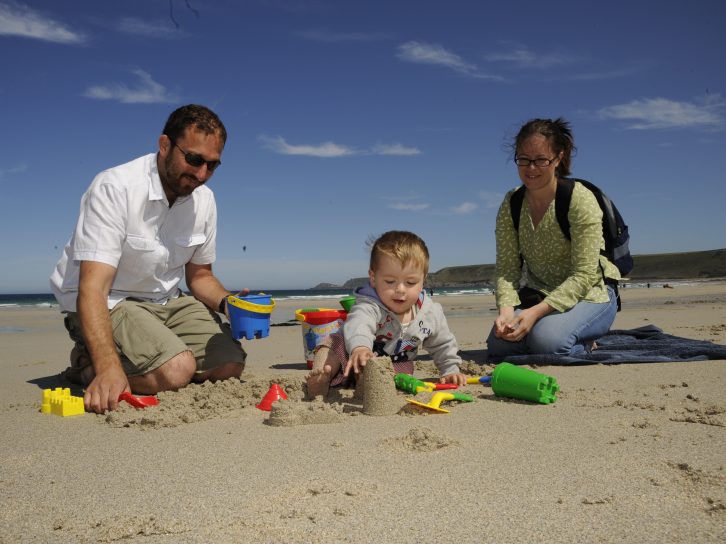
Who are we to argue? With eight beaches in the county currently with Blue Flag status: Widemouth Bay and Crooklets (Bude); Gyllyngvase (Falmouth); Polzeath (also renowned as a noteworthy surfing centre); Porthmeor (St Ives), Porthtowan, Trevone (Padstow) and Great Western Beach (Newquay), little wonder Cornwall is so popular. Add to that, the county’s surfing status and Cornwall exudes an air of coolness for those that like to attach a surfboard to their campervan roof; yes, the county is awash with retro VWs.
But Cornwall has so much more to offer than chic beachside cafés and delectably lickable ice creams. Take its heritage. Head back to Cornwall’s Celtic roots and you’ll find mysterious standing stones as upright as any surfboarder, particularly in the most westerly area between Land’s End, St Just and Penzance.
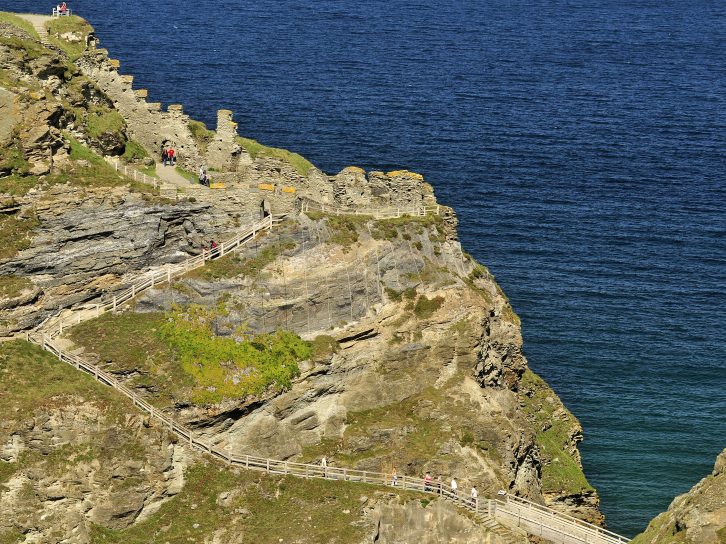
And, while many are building castles in the sand, you could visit Tintagel Castle, where King Arthur makes his presence known. Or hedge your bets on getting your feet wet along the causeway to the iconic St Michael’s Mount, which adds a certain Je ne sais quoi (the privately-owned island is linked to the similar Mont-St-Michel in France) to Mount’s Bay.
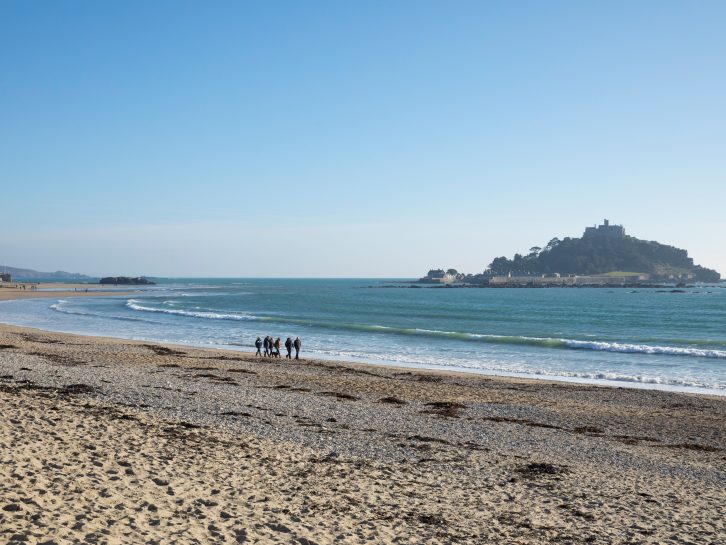
Of course, if you do want to appreciate Cornwall’s coastline without lying on a beach, walking the South West Coast Path is as good as it gets. You can pick up this long distance National Trail at Higher Sharpnose Point on the north coast or Mount Edgecumbe Country Park near Torpoint in the south. The South West Coast 700 can also be followed; this is a tour following the scenic South West Coast Path.
If you’d prefer a little slice of paradise without hopping on a long-distance flight (though a short hop is necessary), the Isles of Scilly are just for you. This little group of islands – five of them inhabited – has a microclimate that links them with the Tropics more than the British Isles. The perfect place to retreat, you’ll find peacock-blue seas and beaches to rival the exotic. Day trips for foot passengers are possible (no motorhomes/campervans are allowed on the islands).
Things to do in Cornwall

1.Visit one of Cornwall’s best-loved – and most endearing – attractions, the Cornish Seal Sanctuary at Gweek. The rescue centre provides a lifeline for stray, sick and injured seal pups that have been discovered around Britain’s coast. Meet the residents, including Grey and Common Seals, Sealions, plus otters and Humbolt penguins.
2. Take a literary tour of Cornwall to discover the many landscapes, towns, villages and coastlines that have inspired generations of writers, from DH Lawrence and Charles Causley to Sir John Betjeman and Daphne du Maurier. It will take you the length and breadth of the county.
3.No visit to Cornwall is complete without a trip to the Eden Project near St Austell. The giant bubble greenhouses offer more than just a day’s entertainment with the chance to learn something about climate and the environment. No wonder it has won countless awards for tourism and conservation.
4.Fancy a pint? Cornwall has a plethora of decent breweries from the ‘mighty’ St Austell Brewery to microbreweries fermenting barrels in the back of a pub. Enjoy a scenic Rail Ale Trail, where you can relax on old branch lines across the county delivering you to a number of traditional pubs along the way. No driving required!
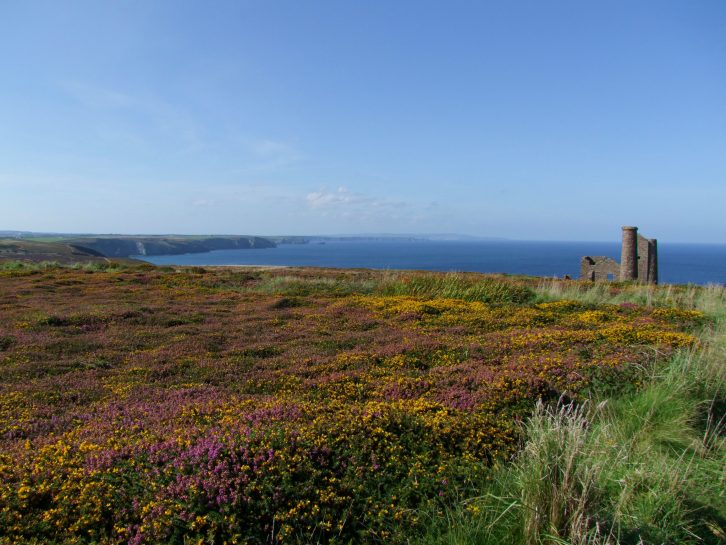
5.Go back in time to discover Cornwall’s past as a major mining district at several UNESCO World Heritage Sites. Key mining attractions to visit across the county include Geevor Tin Mine, Poldark and Levant mines, Cotehele Mill, Morwellham Quay, Heartlands and Godolphin House.
When to visit
Cornwall’s peak season, particularly for camping, is May to September. That means late March/April – when you can see Cornish daffodil fields in bloom – and late September/October can be great months to visit; the roads and major tourist attractions are all quieter.
Cornwall knows how to party, so you’ll always find something going on to tempt you to the county, whether it’s the summer sailing events, the springtime garden shows or the festivals of light to brighten the long, dark days of winter.
Who doesn’t like a good, traditional Cornish pasty? To find the very best, head to the World Pasty Championships in February (for 2022, March) , or for garden mania, Cornwall’s annual Spring Flower Show, which takes place at Lostwithiel in March. The Royal Cornwall Show, the county’s agricultural showcase, is held every June at the county showground, Wadebridge.
You can put one foot in front of another with the Boscastle Walking Week to explore the minutiae of this north coast village in April, sing along at the Falmouth International Sea Shanty Festival in June, or watch battle commence in the final week of August and beginning of September as the County Pilot Gig Championships get underway, a major event in the Cornish cultural calendar.
Do check before you travel as many annual events have been postponed and may not take place during the pandemic.
Cheap Overnight Stops in Cornwall
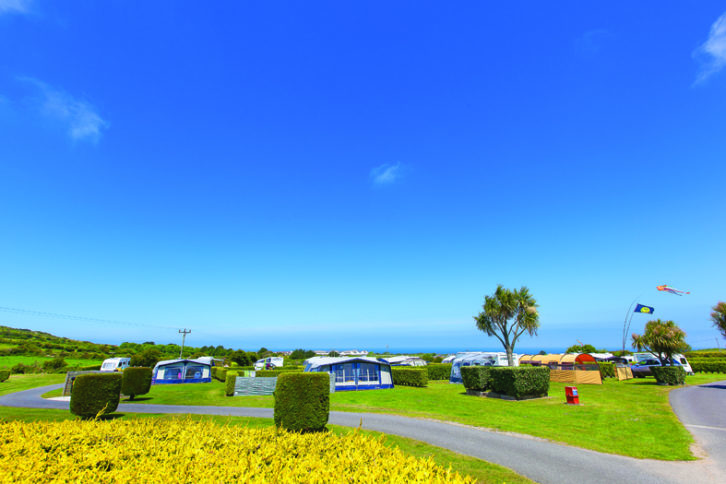
Overnight sleeping is banned in all Council-owned car parks, but then as Cornwall has more opportunities for camping than any other county, you’ll be sure to find something budget-based so motorhome holidays in Cornwall needn’t be expensive..
One such place is Mousehole Camping, a part of the Practical Motorhome Nightstops Scheme. Based in the grounds of a local village football club near Penzance, Mousehole Camping is ideally situated for visiting the town, St Michael’s Mount and walks from the pretty village of Mousehole.
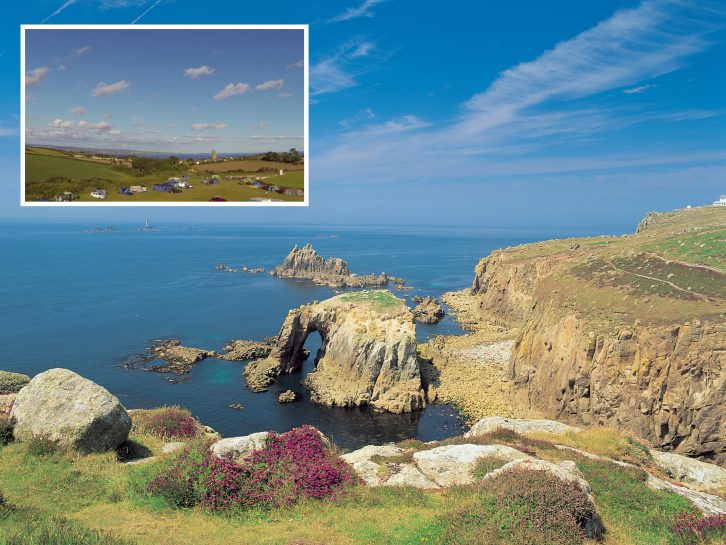
Cornwall is also serviced by a number of sites within the Brit Stops Scheme, offering the motorcaravanner other overnighting possibilities away from standard campsites.
You can also take a look at our guide to the best motorhome sites in Cornwall for more great recommendations.
Getting there
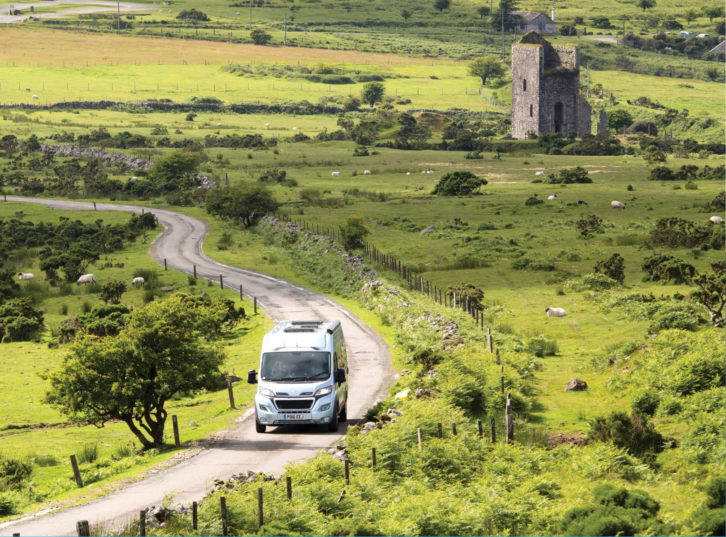
Cornwall’s main artery, which runs down the spine of the county, is the A30. Connecting with junction 31 of the M5 at Exeter, it travels through Devon and the entire length of Cornwall, finishing at Land’s End. Most of the route is dual carriageway to Camborne.
There are several service stations on the A30 for stopping points, including the Cornwall Services, near Bodmin, the largest of all the service stations in the county. Exeter Services, at junction 30 of the M5, also has larger parking facilities for motorhomes, just prior to accessing the A30.
Cycling/Transport Links
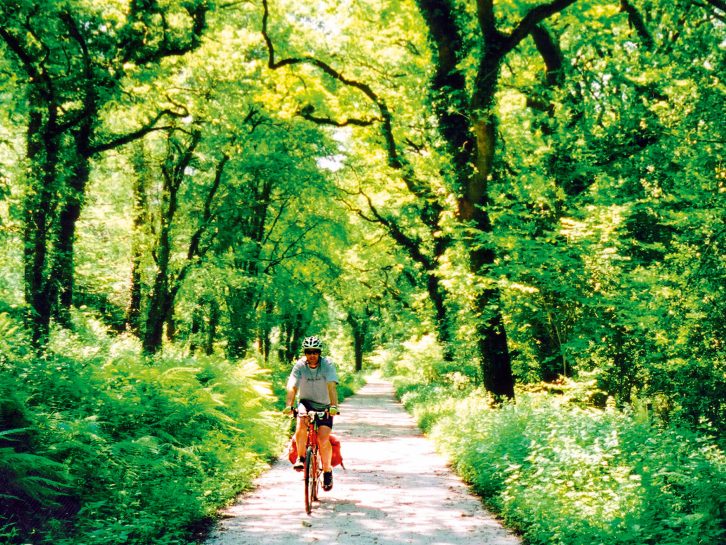
Cornwall is well-served by public buses and trains across the entire county, with many regular services between the major towns such as Newquay, Penzance, Truro and St Austell, together with the smaller seaside towns popular with tourists. You’ll also find that many of Cornwall’s major tourist attractions, such as The Eden Project, Tate St Ives, Lost Gardens of Heligan and many National Trust properties, can be accessed using direct buses.
By bike, The Cornish Way utilises National Cycle Network Routes 3 and 32 from Bude to Land’s End. The trail splits at Truro to go via Padstow or St Austell, joining again at Bodmin. The majority of the route, however, is on-road cycling. To enjoy traffic-free routes, the Camel Trail is one of Cornwall’s most favoured ‘attractions’ providing enjoyable cycling from Padstow to Wenford Bridge via Wadebridge and Bodmin. Other off-road routes include the Pentewan Trail along a part of the south coast, the Clay Trails to Eden Project route and the Mineral Tramways Route close to the north coast.
Motorhome Access in Cornwall
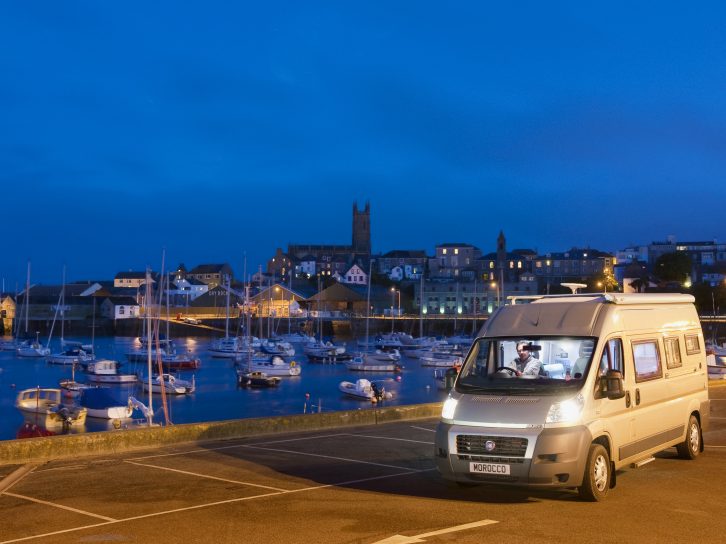
Remaining on the main access roads around Cornwall (the A30, the A38 for south Cornwall and the A39 ‘Atlantic Highway’ in the north), motorcaravanners will encounter few problems other than occasional jams, particularly in the height of summer school holidays.
But the beauty of Cornwall is finding the hideaway places, often along narrow, high-hedged lanes. Check with off-the-beaten-track campsites if they have recommended arrival and departure times to avoid two-way traffic. A fabulous touring route for motorhomes is the relatively quiet B3306 from St Just to St Ives and the B3301 from Hayle to Portreath, both on the north coast.
Motorhomes can park in all Cornwall Council car parks during the day but you’ll find an overnight parking ban at specific car parks (www.cornwall.gov.uk/transport-and-streets/parking/cornwall-council-car-parks/motorhome-parking/) throughout the county.
It’s not possible to take a motorhome (or indeed a car) to the Isles of Scilly. The Scillonian III ferry sails six days a week from March to Octoberr (plus Sundays from July to September) with a 2 hour 45 minute crossing from Penzance to St Mary’s, the Scilly Isles’ largest island. The Skybus air service also operates to St Mary’s from Land’s End (15-minute flight), Newquay (30 minutes) and Exeter (60 minutes). Onward travel to other islands is by ferry. Just four campsites are sited on the Scillies, for tents only (a further two offer glamping facilities), so you’ll need to leave your ‘van on the mainland and take canvas with you instead for an overnight stay.
If you liked this… READ THESE:
A Tale of Two Cornish Coasts: Struggling to choose between the attractions of Cornwall’s gorgeous northern and southern coastline, Susan and Ro Taylor decided to visit both
Bodmin Moor Insider’s Travel Guide: Visit Bodmin Moor with top tips from those in the know
If you’ve enjoyed reading this article, why not get the latest news, reviews and features delivered direct to your door or inbox every month. Take advantage of our brilliant Practical Motorhome magazine SUBSCRIBERS’ OFFER and SIGN UP TO OUR NEWSLETTER for regular weekly updates on all things motorhome related.
Cornwall has so much more to offer than chic beachside cafés and delectably lickable ice creams
